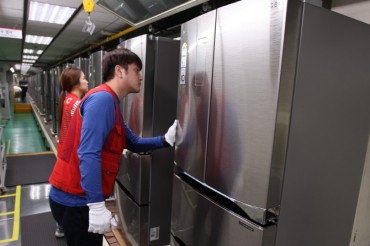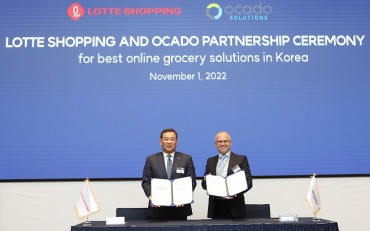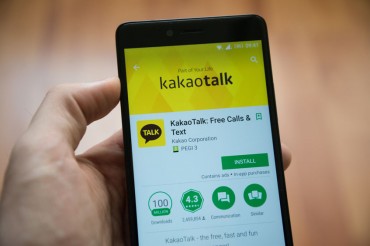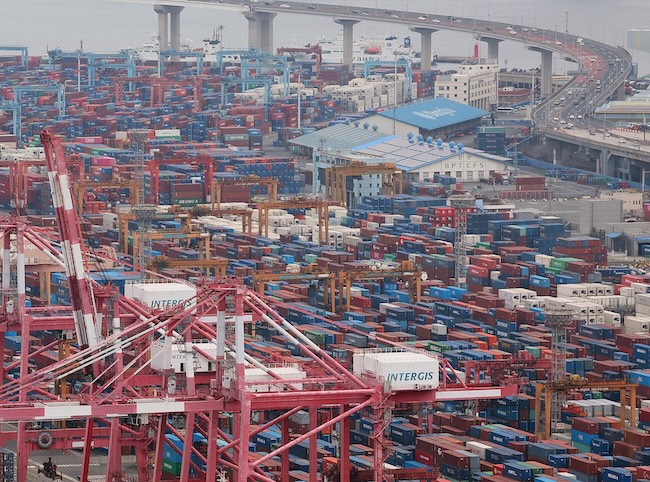
Containers are waiting to be shipped at a port in Busan, about 325 kilometers southeast of Seoul, on March 2, 2025. (Image courtesy of Yonhap)
SEOUL, June 13 (Korea Bizwire) — South Korea’s economic recovery remains elusive, hampered by fragile domestic demand and worsening export conditions, as the government warns of persistent downward pressures that have now stretched into a sixth consecutive month.
In its latest monthly economic report, known as the Green Book, the Ministry of Economy and Finance painted a cautious picture of the nation’s economic health. While the ministry slightly softened its rhetoric—dropping the phrase “increasing downside risks”—it made clear that deep-rooted challenges are far from resolved.
“Private consumption and construction investment continue to recover at a delayed pace, while employment difficulties persist, particularly in vulnerable sectors,” the report said. It also pointed to a marked slowdown in export growth, triggered by deteriorating global trade conditions, including new tariff impositions from the United States.
May’s job numbers offered a glimmer of hope, with the economy adding 245,000 positions—the first time in over a year that monthly job gains surpassed 200,000. Yet the underlying story remains bleak.
The country’s manufacturing sector, long seen as a pillar of national economic strength, shed 67,000 jobs compared to a year earlier—its 11th straight month of contraction. The construction industry fared even worse, losing 106,000 jobs and extending its downward trend for a 13th consecutive month.
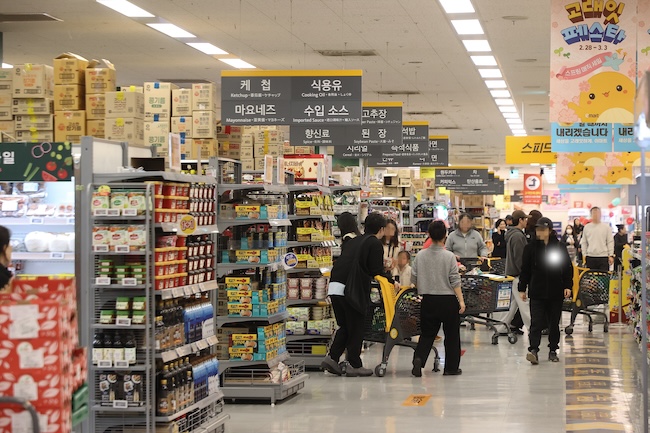
The financial burden of food expenses for South Korea’s lowest-income households has skyrocketed over the past five years. (Image courtesy of Yonhap)
Exports, which had shown signs of life in early 2025, stumbled again in May, falling 1.3 percent year-on-year to $57.3 billion. The decline ended a brief three-month growth streak and was largely driven by a sharp drop in shipments to the United States. Analysts blame the downturn on aggressive tariff policies introduced by President Donald Trump’s administration, which have clouded the outlook for South Korea’s export-reliant economy.
“It is difficult to predict how U.S. tariff policies will unfold,” said Cho Sung-joon, a senior ministry official. “Uncertainty remains very high, particularly in terms of downside risks to the export sector.”
The government says it is working to blunt the impact. Policy priorities include revitalizing consumer spending, supporting small merchants, and shielding vulnerable groups from economic fallout. Efforts are also underway to mitigate damage from ongoing trade tensions, with officials emphasizing the need for swift action to maintain financial stability in increasingly volatile global markets.
As South Korea enters the second half of 2025, policymakers face the daunting task of steering the economy through a landscape marred by protectionist headwinds abroad and sluggish demand at home—conditions that show few signs of easing.
M. H. Lee (mhlee@koreabizwire.com)



